If you are not using Opera, please click on the > > symbol at right to view the full page.

|
Chin’s Nature Corner
|
|
|
|
|
|
CHIN'S NATURE CORNER ~ PHOTO GALLERY ~ DRAGONFLIES & DAMSELFLIES PAGE 2
Dragonflies and Damselflies
Dragonflies
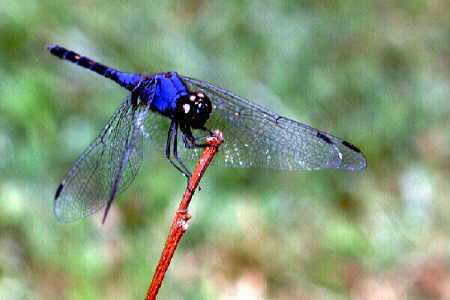
|
Trithemis festiva, which has a deep blue colour, is another eye-catching
species. This species is not often seen, being encountered only at the forest edge or
in relatively undisturbed secondary vegetation.
|
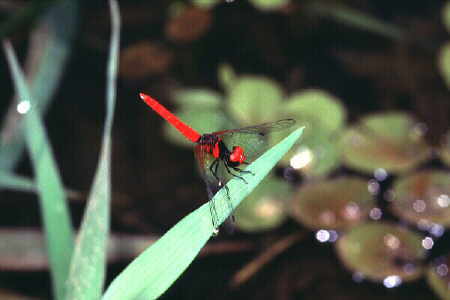
|
Nannophya pygmea, with a wingspan of only about 2.5cm, is one of the
smallest dragonfly species. It is a pygmy among Malaysia's dragonflies. But it makes up
for its small size with an attractive “chilli
red” colour.
|
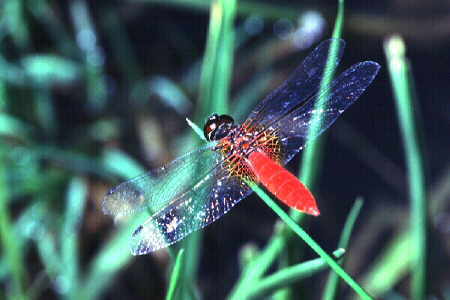
|
Another
dragonfly with an attractive red colour. However, this one is a more commmon species and
somewhat larger than Nannophya pygmea.
|
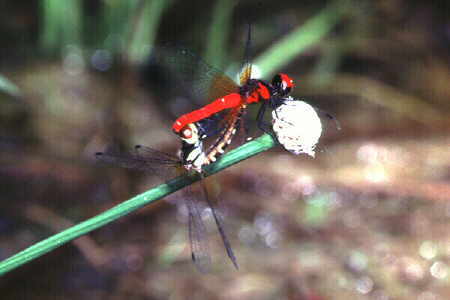
|
A pair of mating
Nannophya pygmea resting on a flower stalk in tandem perch. Dragonflies
are usually sexually dimorphic and the males are often more brightly coloured than
the females.
|
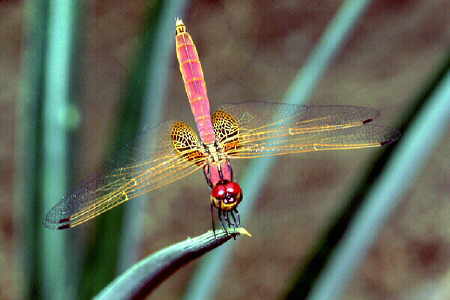
|
This dragonfly has been identified as an immature
Trithemis aurora. Perched at the tip of a pineapple leaf with
its posterior pointing skywards, it looked as though it was doing
a headstand. It was actually trying to stay cool by minimising the rays of the afternoon sun falling on its body.
|
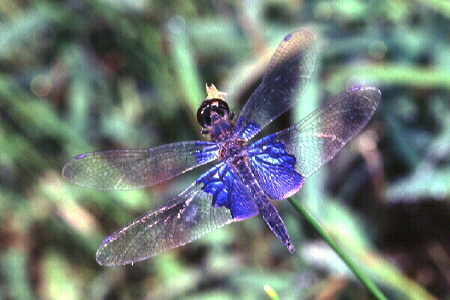
|
Rhyothemis triangularis is another attractive dragonfly with wings partly
coloured a bright enamel blue. It is not a commonly seen species, being found only at the
forest edge and other relatively undisturbed localities.
|
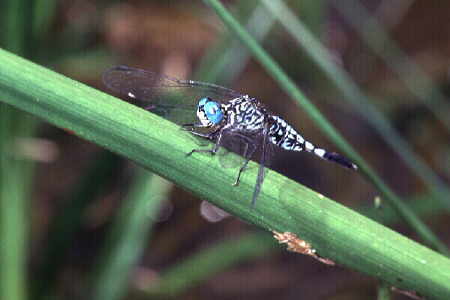
|
Acisoma panorpoides is a common species which inhabits secondary
vegetation near water.
|
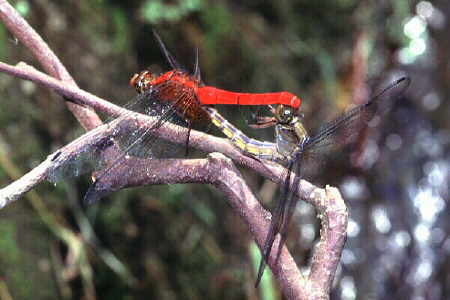
|
A pair of mating dragonflies
(Orthetrum sp) in tandem perch and mating wheel formation. The male is grasping
the female's neck with his posterior end, while the female's posterior is thrust
into his sperm reservoir.
|
This page revised on 22 May 2005. Copyright © Chin Fah Shin.
|
|
If you want to learn to serve God, check out some seminary courses.
CLICK HERE
|












